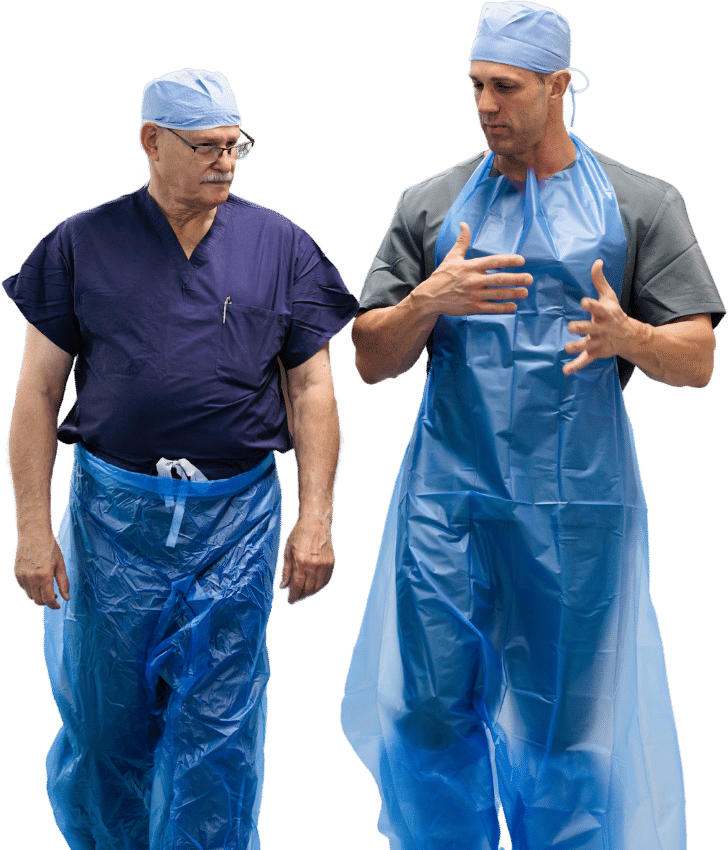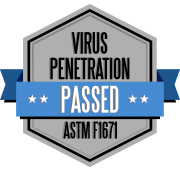Most people don’t spend a lot of time thinking about the unseen world of death care, autopsies, and mortuaries. But you do – because you’re in it. And you deserve the same protective bloodborne pathogen PPE that doctors, nurses, and surgeons have come to expect.
Your safety isn’t just a priority; it’s a necessity. Bloodborne pathogens lurk in these death care, forensic, and mortuary settings, posing significant risks to those who work in them. Proper personal protective equipment (PPE) is crucial to combat these invisible threats and keep infectious materials off you and your team.
Bloodborne pathogens are infectious microorganisms in human blood that can lead to diseases. Professionals in autopsy and mortuary environments face exposure to these dangers almost daily. The risk of infection makes it paramount to choose the right PPE and follow universal precautions to ensure everyone’s safety and peace of mind.
This article will explore the importance of bloodborne pathogen PPE in autopsy and mortuary settings. We’ll delve into the risks within these fields and offer guidance on selecting effective protective gear.
Autopsy and Mortuary Safety: Why You Need Bloodborne Pathogen PPE
Working in autopsy and mortuary settings involves unique risks due to potential exposure to bloodborne pathogens.
Proper personal protective equipment (PPE) is crucial for safety. Bloodborne pathogen PPE helps shield forensic and death care workers from infectious materials like blood, bodily fluids, and unfixed tissue.
This personal protective equipment is an essential part of your facility or team’s exposure control plan. Safeguards against exposure to blood or pathogens that can cause disease in humans, such as the human immunodeficiency virus (HIV), are non-negotiable.
Forensic and death care workers must understand OSHA’s bloodborne pathogen standard for PPE. This includes donning protective clothing, lab coats, gloves, and eye protection. Sharps disposal containers are a must for handling hazardous materials.
Autopsy supplies also include specialized tools for safe and effective procedures. Gowns, aprons, jumpsuits, medical protective leggings, and shoe covers should be part of your autopsy supply kit, too. Protective surface covers, instrument covers, and slide sheets that separate your working surfaces from tissue are important tools to prevent cross-contamination.
A comprehensive PPE approach minimizes occupational exposure and reduces the likelihood of direct contact with pathogenic microorganisms. Mortuary PPE ensures universal precautions are in place, protecting mucous membranes and preventing contact with fluids such as cerebrospinal, pleural, pericardial, synovial, and peritoneal. By adhering to safety measures, workers can maintain a secure and efficient working environment, which is vital in forensics and healthcare.
Bloodborne Pathogen Risk in Death Care & Mortuary Services
Bloodborne pathogens also present significant risks in death care and mortuary services. Workers in these environments could come into contact with infectious materials like blood and other bodily fluids. This exposure can occur during various tasks, such as receiving, embalming, or body preparation. Direct contact with blood, unfixed tissue, or human body fluids like cerebrospinal, pleural, or synovial fluid increases the chance of occupational exposure.
Common Fluids and Risks:
- Blood: Infection is possible through open cuts or mucous membranes.
- Cerebrospinal Fluid: Contact might happen during an autopsy.
- Pericardial Fluid: Exposure during embalming.
In these settings, the use of appropriate personal protective equipment (PPE) is critical. Universal precautions should include gloves, lab coats, and eye protection. Sharps disposal containers are a must to safely handle items like needles, which could transfer diseases.
Preventive Measures:
- Practice universal precautions, always.
- Wear proper PPE: gloves, masks, and disposable medical protective clothing.
- Dispose of sharps in designated containers.
By adhering to these measures, workers can significantly reduce the risk of transmission of diseases such as HIV and other pathogenic microorganisms.
Bloodborne Pathogen Risk in Forensic Science
Forensic scientists and medical examiners often face risks from bloodborne pathogens. These pathogens can cause serious diseases in humans, like human immunodeficiency virus (HIV) and hepatitis.
In a forensic setting, the chances of exposure to blood or bodily fluids are high. During forensic inspections or autopsies, professionals may encounter fluids such as cerebrospinal, synovial, or pleural fluid. Some pathogens can be present in amniotic fluid and other human body fluids – the risks are plentiful, and the likelihood of exposure is high. The occupational risk of infection in forensic workers is a cause for concern, as documented in this study.
Potential Contact Situations:
- Handling of damaged or deceased bodies
- Collection of fluid samples, specifically contact with blood or blood samples
- Direct skin contact with unfixed tissue
Exposure to these materials puts forensic professionals at risk, and disposable medical protective apparel should be part of your exposure control plan. They can come into contact through mucous membranes or when handling sharp objects used in autopsies. Therefore, using protective equipment is crucial. Items like lab coats, gloves, gowns, aprons, jumpsuits, medical protective leggings, shoe covers, and eye protection reduce occupational exposure risks.
How to Choose the Right Bloodborne Pathogen PPE
Choosing the right personal protective equipment (PPE) is crucial when dealing with bloodborne pathogens. This is especially true in forensic and mortuary settings. Proper PPE not only helps protect you but also ensures the safety of your work environment. Each PPE component, from disposable medical apparel to instrument covers and slide sheets, plays a role in reducing exposure risks. By focusing on certain key requirements, you can make informed decisions about your safety equipment.
Impermeability
Impermeability is a critical factor when choosing PPE for bloodborne pathogens. PPE’s primary function is to act as a barrier against fluids and viruses, and only impermeable materials can do that.
This prevents exposure to harmful pathogens like HIV and hepatitis. The materials used in PPE should be fluid and virus impermeable. They should also be tested and verified compliant under the ASTM-F1671 standard. This standard tests materials for their resistance to penetration by bloodborne pathogens.
Ensuring compliance with this standard means the PPE will effectively protect the user against contact with infectious materials. When PPE is reliably impermeable, it gives professionals the confidence to perform their duties safely.
Ease of Use
Ease of use is a key consideration for PPE in forensic or mortuary settings, which can be stressful and hurried at times.
PPE should be simple to put on and take off, reducing the risk of accidental exposure during these transitions. One-size-fits-all sizing is often preferred in these environments. It eliminates the need to stock various sizes, streamlining inventory and ensuring availability. Additionally, one-size-fits-all PPE simplifies the process of selecting and wearing protective gear.
Non-slip shoe covers, medical booties, and medical leggings are an essential aspect of foot protection in these settings. Non-slip PPE ensures stability and prevents accidents when navigating potentially slippery surfaces.
When PPE is easy to use, professionals can focus more on their important work without worrying about their safety gear.
Ready Availability
In forensic, autopsy, or mortuary settings, the ready availability of PPE from a reliable source is crucial. It’s important to source PPE from a North American manufacturer with a stable supply line.
This ensures consistent access to necessary protective equipment. Importantly, it helps prevent shortages that could put workers at risk. Reliable availability means that PPE is always on hand when needed, avoiding disruptions to essential procedures. It also guarantees that the quality of the equipment meets regional standards and regulations.
By prioritizing PPE availability, facilities ensure that their workers are never left without the protection they need.
Superior Protection for Professionals Like You
Encountering bloodborne pathogens is a serious risk for many professionals in the forensic or death care industries. Forensic experts and morticians need reliable protection, just as surgeons and healthcare professionals have come to expect.
Sloan Medical’s STA-DRI and ezGLIDE PPE provide top-notch safety. These products are designed to safeguard against infectious materials such as blood and other bodily fluids.
Why Choose STA-DRI and ezGLIDE?
- Enhanced Barrier: Both product lines offer superior barriers against direct contact with blood and fluids.
- Comfortable Fit: The one-size fit and breathable panels ensure an ease of movement and a level of comfort, helping professionals perform tasks efficiently.
Not everyone thinks about the unseen world of death care, autopsies, and mortuaries often – but we do because you do, and you do because you’re in it every day. Try the superior PPE you and your team deserve. Request your free sample pack today, and you’ll stay safer during occupational exposure. No matter what risks your next shift brings, Sloan Medical has got you covered.





